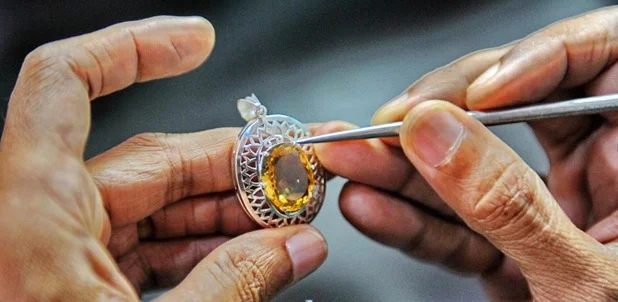Jewelry manufacturing is the process of creating jewelry from raw materials, whether it’s gold, silver, platinum, diamonds, or other precious stones. It’s a blend of artistry, craftsmanship, and technology, with manufacturers serving as the backbone of the entire industry. Jewelry manufacturers bridge the gap between concept and product, transforming beautiful designs into tangible items that grace the market.
What is Jewelry Manufacturing?
At its core, jewelry manufacturing is about turning raw precious metals and stones into finished products like rings, necklaces, bracelets, and earrings. The process involves everything from sourcing the materials to the final inspection of each piece. Manufacturers are responsible for ensuring quality, consistency, and craftsmanship. Jewelry manufacturers are pivotal in the supply chain. They work closely with designers to bring visions to life, and with suppliers to secure the necessary materials. Without these manufacturers, there would be no beautiful jewelry to sell, wear, or enjoy.
Types of Jewelry Manufacturers
Not all jewelry manufacturers are the same. The industry is diverse, with manufacturers specializing in various segments. Let’s take a look at the different types:
Mass-Production Manufacturers
These manufacturers focus on creating large quantities of jewelry. They often cater to retail chains, online marketplaces, or wholesalers. Mass production allows for cost-effective production and rapid turnaround, but it may sacrifice some level of uniqueness or customization.
Custom Jewelry Manufacturers
Custom manufacturers specialize in creating bespoke jewelry. They work closely with clients to design pieces that meet individual preferences, from engagement rings to personalized necklaces. Custom manufacturing requires skilled craftsmanship and is typically more expensive due to its labor-intensive nature.
High-End/Exclusive Jewelry Manufacturers
High-end jewelry manufacturers cater to luxury markets, producing high-quality, exclusive pieces. These manufacturers focus on using the finest materials, such as rare gemstones and precious metals, and may work with renowned designers or brands. Their products are often seen as status symbols.
The Jewelry Manufacturing Process
Creating jewelry is an intricate process that involves several steps, each contributing to the final product. Here’s a breakdown of the key stages in jewelry manufacturing:
Sourcing Raw Materials: The first step in jewelry manufacturing is sourcing high-quality materials. This includes precious metals like gold, silver, and platinum, as well as gemstones and diamonds. Ethical sourcing has become a priority for many manufacturers, who are increasingly aware of the environmental and social impact of mining practices.
Designing Jewelry: Once the materials are in hand, the design process begins. Designers create blueprints or digital models of the jewelry. This step often involves a combination of hand sketches and computer-aided design (CAD) tools, allowing manufacturers to visualize the final product before crafting it.
Crafting and Assembling: In this phase, raw materials are cut, shaped, and assembled into the desired pieces. Depending on the complexity of the design, this process can be done by hand or with the aid of machinery. Skilled artisans often perform delicate tasks like setting stones or engraving intricate patterns.
Quality Control and Finishing: After the piece is crafted, it undergoes a strict quality control process. This ensures that every piece meets the necessary standards for durability, appearance, and craftsmanship. Final touches like polishing, plating, and engraving are done to perfect the jewelry.
Technology in Jewelry Manufacturing
Technology has transformed the jewelry manufacturing process, enabling manufacturers to create more intricate, precise, and customized pieces. 3D printing has revolutionized the way jewelry is made. With CAD software, manufacturers can design and print prototypes or even the final product, allowing for high levels of customization. 3D printing also reduces waste, making the process more eco-friendly. Laser technology is now commonly used in jewelry manufacturing for precise cutting, engraving, and detailing. It allows for intricate designs that would be difficult or time-consuming to achieve by hand. While automation allows manufacturers to produce jewelry at a rapid pace, handcrafted jewelry is still highly valued for its artistry and individuality. Many high-end manufacturers combine both approaches to balance quality and efficiency.
Challenges Faced by Jewelry Manufacturers
Jewelry manufacturers face several challenges, many of which are tied to global trends and the evolving marketplace. The cost of precious metals and stones fluctuates with global markets, affecting the price of raw materials. Manufacturers must find ways to adapt to these changes while maintaining profitability. In recent years, global supply chains have faced disruptions due to factors like political instability, pandemics, and natural disasters. Jewelry manufacturers must manage these risks to ensure timely delivery and quality control. Consumer preferences in jewelry can change rapidly, influenced by trends, fashion, and cultural shifts. Manufacturers need to stay ahead of these trends to stay relevant and competitive.
Sustainability in Jewelry Manufacturing
As consumers become more eco-conscious, sustainability has become a key focus for jewelry manufacturers.
- Ethical Sourcing of Materials: Many jewelry manufacturers are now prioritizing ethical sourcing, ensuring that materials like diamonds and gold come from conflict-free and environmentally responsible sources.
- Eco-friendly Practices: Eco-friendly manufacturing processes, such as using recycled metals and reducing waste, are gaining traction. Some manufacturers also embrace fair-trade practices to support workers in developing countries.
- Certification and Transparency: Consumers are increasingly seeking transparency in the sourcing and production of jewelry. Certifications like Fairmined or Responsible Jewelry Council (RJC) certification assure customers that the jewelry has been ethically produced.
Global Jewelry Manufacturing Trends
As the jewelry industry continues to evolve, several global trends are shaping its future.
Influence of Social Media and Influencers
Social media platforms like Instagram and TikTok have a massive impact on jewelry trends. Influencers and celebrities often set the stage for what’s “in,” driving demand for certain styles, designs, or materials.
Rise of Lab-Grown Diamonds
Lab-grown diamonds are gaining popularity as an ethical and affordable alternative to mined diamonds. Manufacturers are increasingly embracing this trend, creating high-quality diamonds that are virtually indistinguishable from natural ones.
Changing Consumer Demands
Today’s consumers are more informed and demanding. They seek personalized, sustainable, and high-quality jewelry. Manufacturers must adapt to these expectations to remain competitive.
Choosing the Right Jewelry Manufacturer
Selecting the right jewelry manufacturer can make or break a brand. Here are some factors to consider:
- Reputation: A manufacturer’s reputation is crucial. Look for customer reviews and testimonials to gauge their reliability.
- Experience: Choose manufacturers with a proven track record in producing high-quality jewelry.
- Customization: Ensure they offer flexibility in design and can accommodate your specific requirements.
In the digital age, online reviews and reputation play a significant role in decision-making. Be sure to check reviews and ask for references before committing to a manufacturer. Certifications like ISO 9001 or RJC certification ensure that the manufacturer follows industry standards and ethical practices.
The Future of Jewelry Manufacturing
The future of jewelry manufacturing is bright, with numerous innovations on the horizon. Expect to see more use of 3D printing, advanced materials, and automation in the coming years. These innovations will make the manufacturing process more efficient, eco-friendly, and customizable. As sustainability continues to be a priority for consumers, manufacturers will need to keep pushing for greener practices, from sourcing to production.
Conclusion
Jewelry manufacturers are vital to the creation of beautiful, timeless pieces. Their role encompasses everything from raw material sourcing to design, production, and quality control. As the industry evolves, manufacturers must adapt to new technologies, changing consumer demands, and sustainability pressures. By choosing the right manufacturer, consumers and businesses alike can ensure they’re getting high-quality, ethically produced jewelry that will stand the test of time.







Leave a Reply